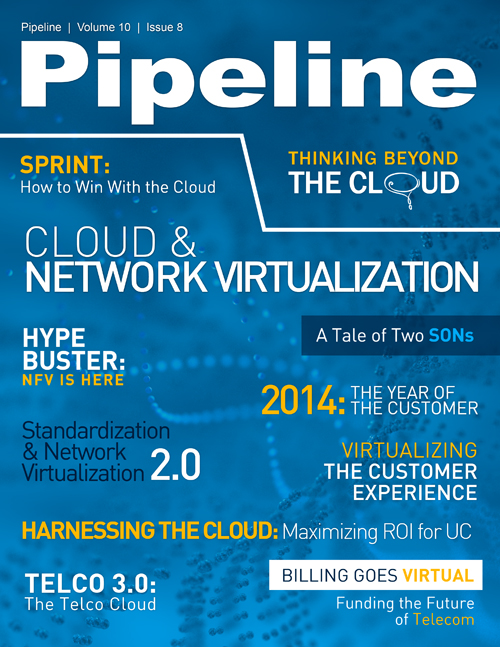More than Hype, NFV is Here
Early deployments
As previously mentioned, several CSPs are already executing on NFV plans in limited stages. In September,
2013, AT&T launched its Supplier Domain Program 2.0, an aggressive push into network virtualization. In
a press release the company called the program a “transformative initiative” that employs NFV
and SDN and is “integrated through AT&T’s Wide Area Network (WAN).”
At Digital Disruption, James Feger, VP network strategy and development, CenturyLink, spoke of his company’s NFV initiatives. "I am a huge believer in NFV; I have a team of architects dedicated to NFV, in a group I created specifically for that,” said Feger. “We have a live NFV deployment in production.”
In November, 2013, SK Telecom and Nokia Solutions and Networks (NSN) announced successful trials of NFV in the mobile network. “We have now completed proof-of-concept projects for voice as well as packet core network functions virtualization,” said Reino Tammela, Vice President Packet Core, NSN. “We proved that handling both control and user plane traffic in the cloud is feasible and a viable option to meet the performance requirements of data traffic growth.”
Where to virtualize?
According to a survey conducted by Infonetics Research and published in July, 2013, CSPs are deploying NFV in contained domains as they test the waters; but there is strong momentum behind the technology. The participants of the study ranked the following domains as the top applications for NFV:
- Content delivery networks (CDNs)
- IP Multimedia Subsystems (IMSs)
- Routers/security gateways
Although NFV can be implemented across nearly all network elements, it makes both practical and economic sense to start with limited domains. Yuri Gittik, head of strategic marketing at RAD, spoke with Pipeline about which domains are best primed for virtualization. “Virtualize from functionality that is already centralized and exists in dedicated hardware,” said Gittik. “PCRF [policy and charging rules function], gateways, IMS, and EPC [evolved packet core].”
Analyst perspective
Research into NFV performed by leading analysts firms confirms the development of NFV and reveals major market potential. In November, Mind Commerce estimated that the NFV market in 2014 will be worth $203 million, and will grow at 46 percent annually until 2019, when it reaches $1.3 billion. The research firm states that the chief domains targeted by early NFV deployments will be IMS services and the EPC.
Last August ABI Research predicted a similar growth curve, with a potential $6 billion market for virtual networking by 2018. “Software Defined Networking and Network Functions Virtualization are shaping up to fundamentally change the nature of the telecom industry,” said Joe Hoffman, Practice Director at ABI Research, in a news release. “The changes in business practices will enhance both top line and bottom line financial results much more than just cost reductions. In the long run, operators embracing SDN/NFV will outrun their competitors with a much faster service velocity.” ABI positioned NSN and Cisco ahead of the pack for NFV.
Recommendations
NFV may be more than hype, but how far off is large-scale implementation?
“I would imagine that every carrier is considering NFV--there is no way to avoid it,” said Yuri Gittik. “However, to be clear, for most of the carriers, this technology is still in the lab, CTO office. Pretty far from being implements, productized, and monetized.”
James Feger, CenturyLink, is actively pursuing NFV, but the reality of a wholesale network transformation must be considered. “You're talking about thousands of routers and switches," he said at TIA 2013 last October in Washington, D.C. "We're several years away.”
Still, now is the time to lay the foundation for a platform evolution. Start small with one service domain or one region, like Deutsche Telekom is doing with TeraStream. Begin with functions that are already centralized, and chose vendors that enable growth into new services and support a multi-vendor framework. Pay close attention to publications from the ETSI NFV workgroup, as they will progressively reveal the challenges and solutions operators face during migration to NFV-driven networks.
NFV, in essence, applies a cloud model to the network itself, and will undoubtedly shape the future. It is more than hype—it is here, and it’s time to start designing the network to accommodate multi-vendor interoperability and wholesale virtualization.



















